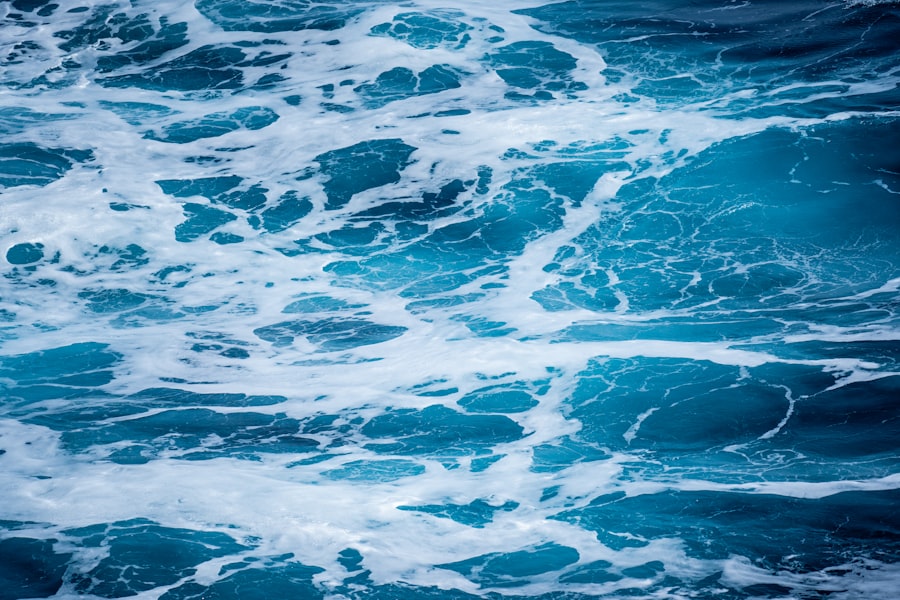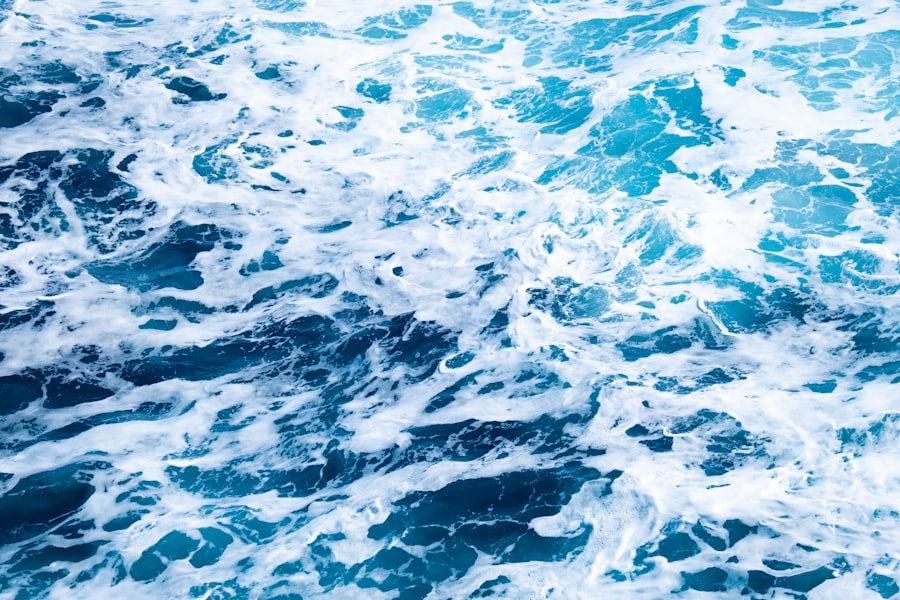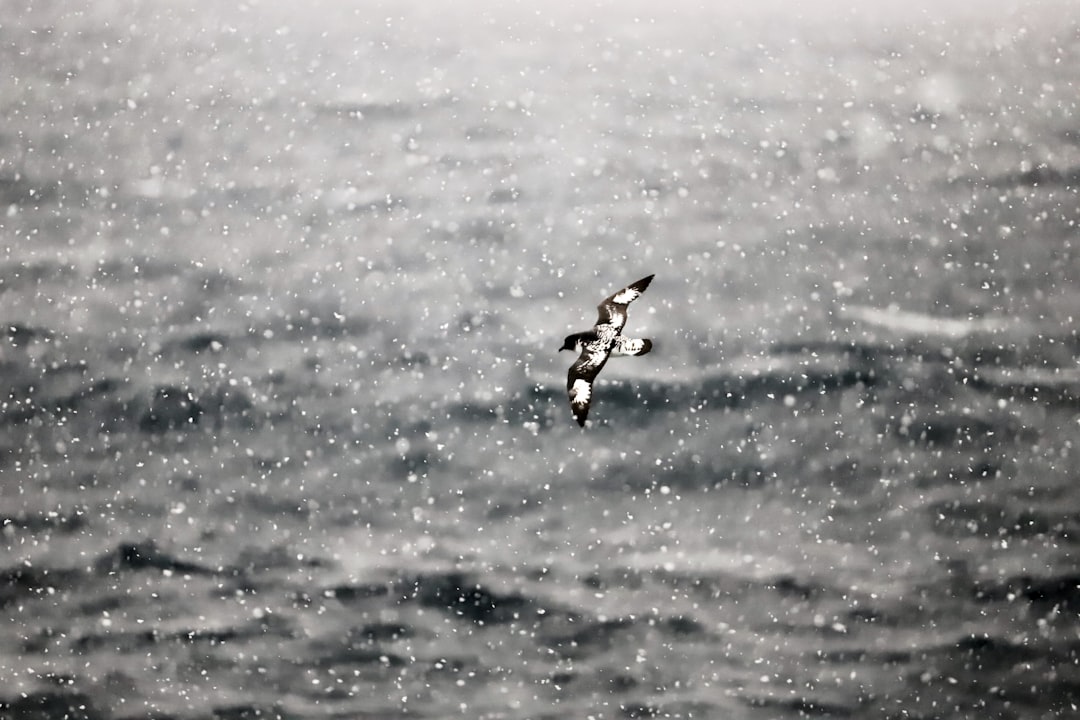The Drake Passage, a body of water situated between the southern tip of South America and Antarctica, is renowned for its tumultuous seas and unpredictable weather. Spanning approximately 800 kilometers (500 miles), this passage serves as a critical maritime route for vessels traveling to and from the Antarctic region. Named after the English explorer Sir Francis Drake, who navigated these waters in the late 16th century, the Drake Passage is not only a geographical landmark but also a significant point of interest for adventurers and researchers alike.
Its unique position makes it a vital conduit for ocean currents, particularly the Antarctic Circumpolar Current, which plays a crucial role in regulating global climate patterns. The passage is often characterized by its rough seas and strong winds, which can create challenging conditions for even the most seasoned mariners. The convergence of the Atlantic, Pacific, and Southern Oceans results in a dynamic environment where waves can reach staggering heights.
This unpredictability has earned the Drake Passage a reputation as one of the most formidable stretches of water in the world. Despite its challenges, the passage is also a gateway to some of the most pristine and untouched landscapes on Earth, making it a sought-after destination for those eager to explore the wonders of Antarctica.
Key Takeaways
- The Drake Passage is a body of water between South America’s Cape Horn and the South Shetland Islands of Antarctica, known for its rough seas and challenging conditions.
- Proper preparation for the journey through the Drake Passage is essential, including packing appropriate clothing and gear, and being mentally prepared for the potential challenges.
- Weather and sea conditions in the Drake Passage can be unpredictable and extreme, with strong winds, high waves, and rapidly changing weather patterns.
- The Drake Passage is home to diverse wildlife and stunning scenery, offering opportunities to see whales, seabirds, icebergs, and breathtaking landscapes.
- Safety measures, navigation, and route planning are crucial for a successful and safe passage through the Drake Passage, with experienced crew and well-equipped vessels being essential.
Preparing for the Journey
Preparation for a journey through the Drake Passage requires careful planning and consideration. Travelers must first decide on their mode of transportation, whether it be a cruise ship or a smaller expedition vessel. Each option offers distinct advantages and challenges, with larger ships providing more amenities and smaller vessels allowing for closer encounters with wildlife and ice formations.
Regardless of the choice, it is essential to book in advance, as trips to this remote region can fill up quickly, especially during peak travel seasons. Packing appropriately is another critical aspect of preparation. The weather in the Drake Passage can be highly variable, so travelers should equip themselves with layers of clothing that can be adjusted according to changing conditions.
Waterproof outerwear, thermal undergarments, and sturdy footwear are essential items to include in one’s packing list. Additionally, travelers should consider bringing personal items such as seasickness medication, binoculars for wildlife watching, and a good camera to capture the breathtaking scenery that awaits them.
Weather and Sea Conditions

The weather in the Drake Passage is notoriously unpredictable, with conditions that can shift dramatically within a matter of hours. Travelers should be prepared for everything from calm seas to violent storms. The summer months, particularly from November to March, generally offer milder weather and more favorable sailing conditions.
However, even during these months, sudden squalls can arise, leading to rough seas that challenge even experienced sailors. Sea conditions in the Drake Passage are influenced by various factors, including wind patterns and ocean currents. The infamous “Drake Shake,” characterized by high waves and strong winds, can occur unexpectedly, making it essential for travelers to remain vigilant and adaptable.
Understanding these weather patterns can help individuals better prepare for their journey and manage expectations regarding travel times and comfort levels on board.
Wildlife and Scenery
| Category | Metrics |
|---|---|
| Wildlife | Number of species |
| Scenery | Visitors’ rating |
| Wildlife | Protected area coverage |
| Scenery | Photographic opportunities |
One of the most compelling reasons to traverse the Drake Passage is the opportunity to witness its remarkable wildlife and stunning scenery. The waters are teeming with life, including various species of whales such as humpbacks, orcas, and minke whales. Birdwatchers will also find delight in spotting seabirds like albatrosses and petrels soaring gracefully above the waves.
The chance to observe these magnificent creatures in their natural habitat adds an exhilarating dimension to any journey through this region. In addition to its rich marine life, the Drake Passage offers breathtaking views of icebergs and glaciers that define the Antarctic landscape. The stark contrast between the deep blue waters and the brilliant white ice creates a visual spectacle that captivates all who venture through these waters.
As vessels navigate through this icy realm, travelers are often treated to awe-inspiring vistas that evoke a sense of wonder and appreciation for the raw beauty of nature.
Safety Measures
Safety is paramount when navigating the Drake Passage, given its reputation for unpredictable weather and challenging sea conditions. Travelers should always prioritize their well-being by adhering to safety protocols established by their vessel’s crew.
Life jackets should be worn when required, and individuals should remain aware of their surroundings at all times. In addition to following onboard safety measures, travelers should also consider their personal health and preparedness. Those prone to seasickness may benefit from consulting with a healthcare professional before embarking on their journey to discuss preventive medications or remedies.
Staying hydrated and maintaining a balanced diet while at sea can also contribute to overall well-being during the trip.
Navigation and Route Planning

Effective navigation through the Drake Passage requires careful route planning by experienced captains and crew members. Utilizing advanced technology such as GPS systems and radar helps ensure safe passage through these often-turbulent waters. Additionally, understanding local maritime charts and weather forecasts is crucial for making informed decisions about course adjustments.
The route taken may vary depending on several factors, including weather conditions, sea state, and specific destinations within Antarctica. Some vessels may opt for a more direct route across the passage, while others may choose to navigate around certain islands or ice formations for scenic views or wildlife encounters. Regardless of the chosen path, skilled navigators play an essential role in ensuring that travelers reach their destination safely while maximizing their experience along the way.
Challenges and Risks
Traveling through the Drake Passage is not without its challenges and risks.
Additionally, the isolation of this region means that access to medical facilities is limited; therefore, travelers must be prepared for emergencies that may arise during their journey.
Another challenge lies in the environmental considerations associated with traveling to such remote areas. The impact of human activity on fragile ecosystems is a growing concern among conservationists. Travelers should be mindful of their environmental footprint and adhere to guidelines set forth by their tour operators to minimize disruption to wildlife habitats and preserve the pristine nature of Antarctica.
Tips for a Smooth Passage
To ensure a smooth passage through the Drake Passage, travelers can adopt several practical tips that enhance their experience. First and foremost, maintaining an open mind and flexible attitude is essential when dealing with changing conditions at sea. Embracing spontaneity can lead to unexpected adventures and memorable moments along the journey.
Additionally, staying connected with fellow travelers can foster camaraderie during challenging moments at sea. Sharing experiences and supporting one another can create a sense of community that enhances the overall journey. Engaging with onboard naturalists or guides can also provide valuable insights into the unique environment being traversed, enriching travelers’ understanding of this remarkable region.
Activities and Excursions
While crossing the Drake Passage is an adventure in itself, many vessels offer additional activities and excursions that enhance the overall experience. Guided wildlife watching tours provide opportunities to observe marine life up close while educational lectures from experts help deepen understanding of Antarctic ecosystems. Photography workshops may also be available for those looking to capture stunning images of their surroundings.
For those seeking more active pursuits, kayaking or zodiac excursions allow travelers to explore icebergs and coastal areas more intimately. These activities not only provide unique perspectives on the landscape but also foster a deeper connection with nature as participants navigate through serene waters surrounded by breathtaking scenery.
Historical Significance
The historical significance of the Drake Passage cannot be overstated. It has long been a critical route for explorers seeking to uncover the mysteries of Antarctica. Sir Francis Drake’s voyages in the late 1500s paved the way for future expeditions that would ultimately lead to significant scientific discoveries about this remote region.
In modern times, the passage continues to serve as an important route for research vessels studying climate change and its effects on polar ecosystems. The data collected from these expeditions contributes to our understanding of global environmental issues and highlights the importance of preserving these fragile habitats for future generations.
Testimonials and Personal Experiences
Many travelers who have crossed the Drake Passage share stories filled with awe and wonder at their experiences in this remarkable region. Testimonials often highlight moments of breathtaking beauty as well as encounters with wildlife that leave lasting impressions on those fortunate enough to witness them firsthand. Personal experiences vary widely; some recount moments of exhilaration as they navigated through rough seas while others reflect on serene moments spent observing whales breaching in the distance.
Regardless of individual experiences, one common thread emerges: crossing the Drake Passage is an unforgettable adventure that leaves an indelible mark on all who embark on this journey into one of Earth’s last frontiers.
The Drake Passage, a significant body of water located between the southern tip of South America and Antarctica, is renowned for its challenging navigation conditions and its role in global ocean circulation. For those interested in exploring more about geographical wonders and their implications, an insightful article can be found on MyGeoQuest. This article delves into various geographical phenomena and their impacts on our world. To learn more, visit the related article on MyGeoQuest’s sample page.
WATCH NOW! Drake Passage: Earth’s Deadliest Waters Revealed
FAQs
What is the Drake Passage?
The Drake Passage is a body of water located between the southern tip of South America (Cape Horn) and the South Shetland Islands of Antarctica. It connects the southwestern part of the Atlantic Ocean with the southeastern part of the Pacific Ocean.
Why is the Drake Passage significant?
The Drake Passage is known for its rough seas and strong winds, making it one of the most challenging and unpredictable bodies of water to navigate. It is also an important oceanic gateway for the circulation of water and marine life between the Atlantic and Pacific Oceans.
What is the weather like in the Drake Passage?
The weather in the Drake Passage is characterized by strong winds, high waves, and rapidly changing conditions. It is notorious for its stormy and unpredictable weather, with frequent low-pressure systems and rough seas.
What wildlife can be found in the Drake Passage?
The Drake Passage is home to a diverse range of marine wildlife, including various species of whales, seals, and seabirds. It is also a popular area for birdwatching, with numerous species of albatross and petrels frequenting the region.
How is the Drake Passage important for scientific research?
The unique oceanographic and atmospheric conditions of the Drake Passage make it an important area for scientific research. It is a key location for studying ocean currents, climate patterns, and marine ecosystems, as well as for conducting research on the effects of climate change.
